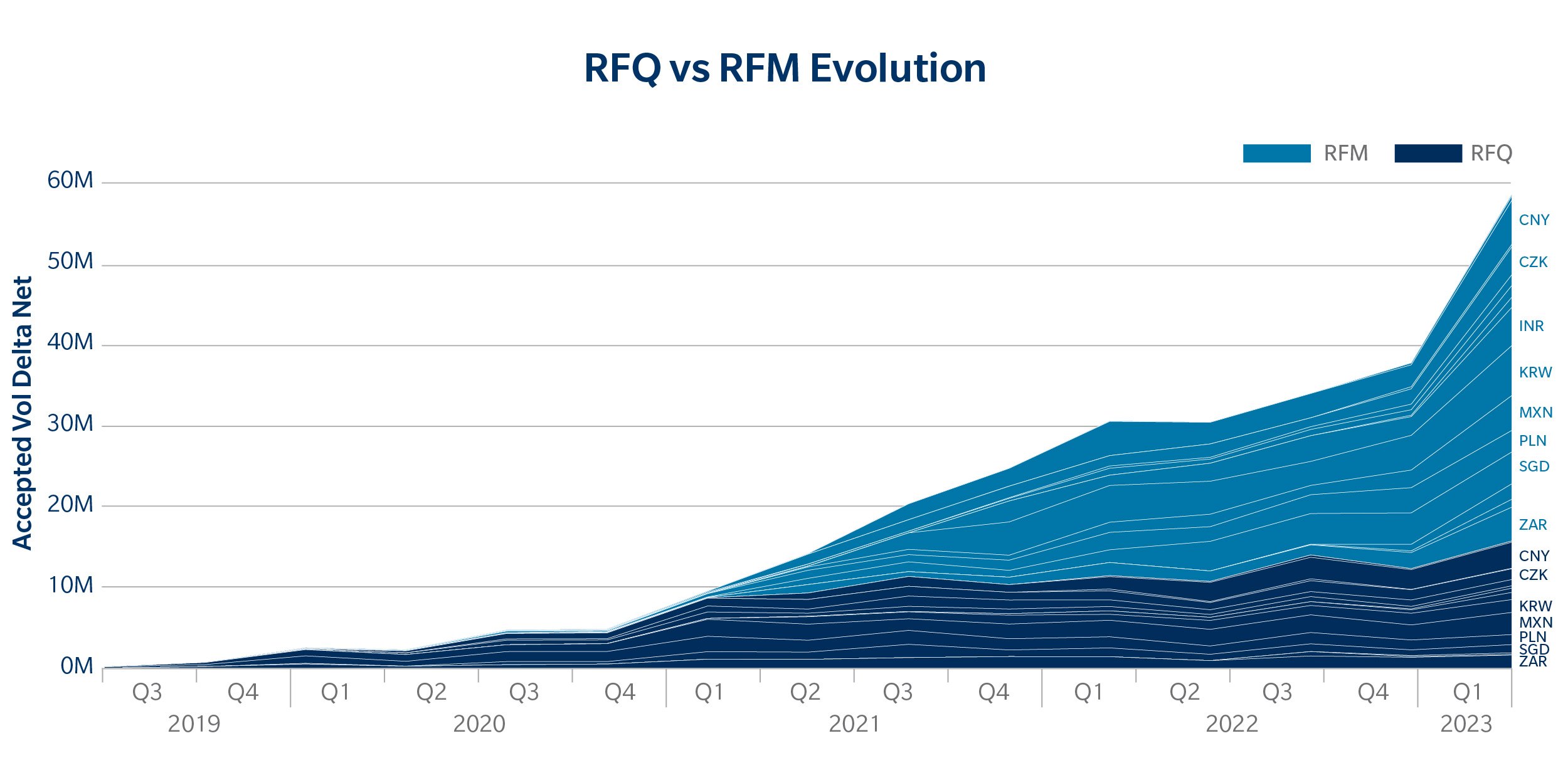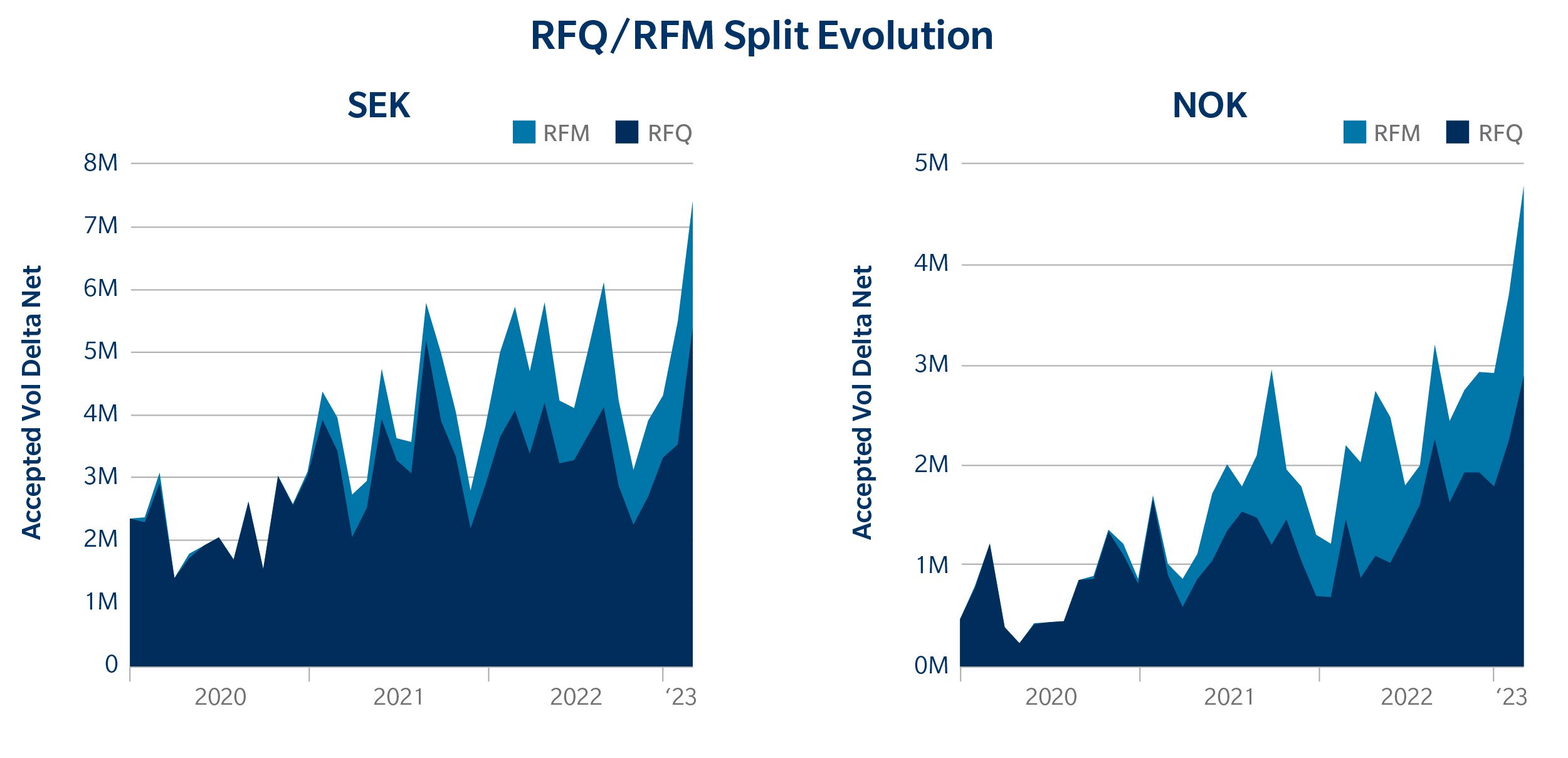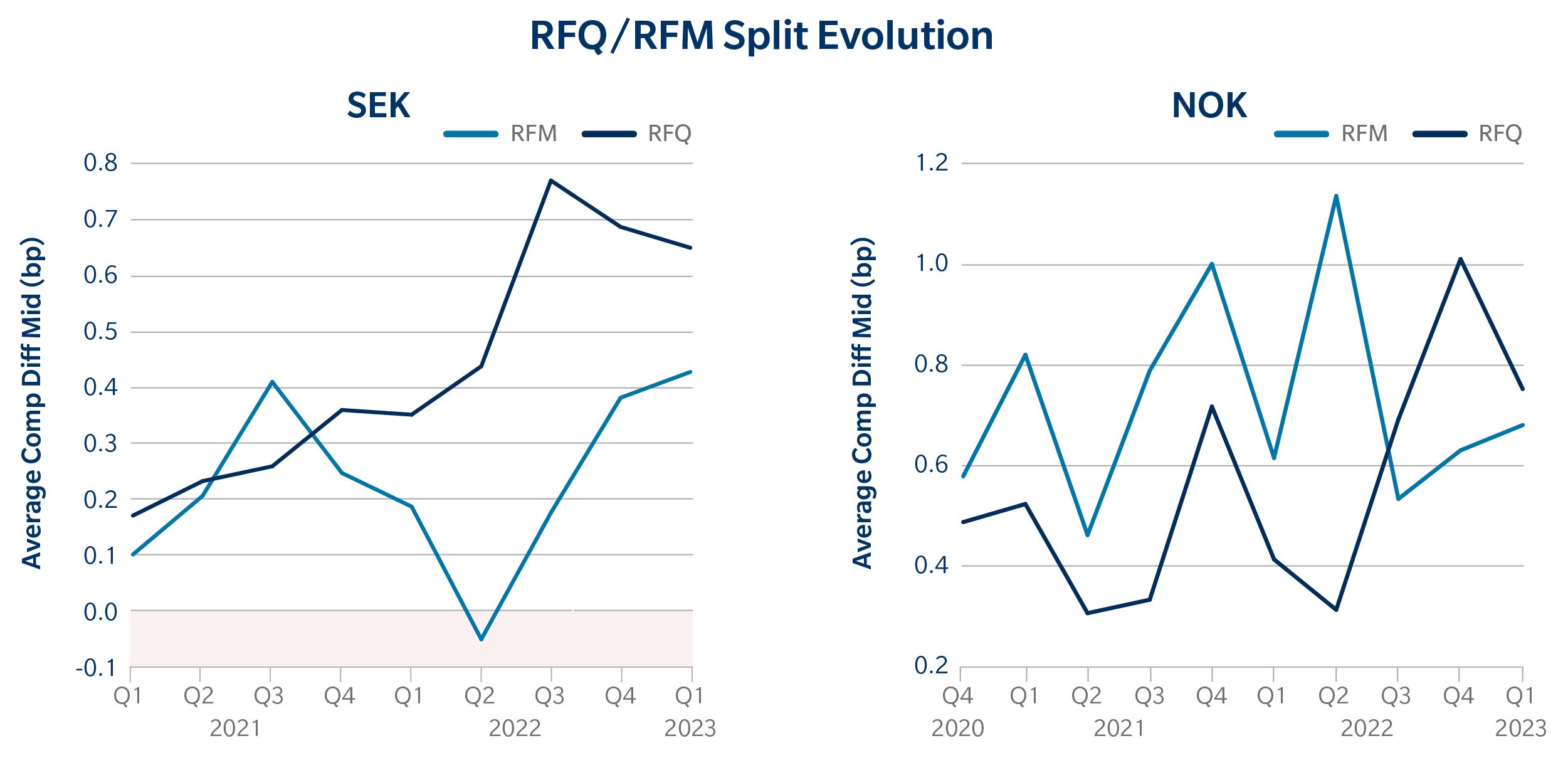The trading mechanism helping EM swaps investors navigate periods of market stress
In today's ever-changing financial landscape, market participants are constantly seeking efficient and reliable trading solutions to navigate periods of market stress and volatility. One such solution which has gained significant traction in the last few years is the Request-for-Market (RFM) protocol. This is hardly surprising as through the RFM protocol, buy-side clients are able to ask dealers for a two-way market rather than a price based on one direction.
Our recently published article outlined that emerging markets (EM) trading desks have found significant opportunity in embracing electronification. Electronic trading protocols, like RFM, are helping to address some of the major challenges associated with EM trading, including geographic fragmentation, less transparency in pricing and language barriers. As a result, adoption of RFM has significantly increased over the last five years particularly on our interest rate swaps (IRS) platform.
In this blog, we will delve into the trends we are seeing in the rising utilization of RFM during stressed market conditions and flare-ups in volatility, specifically around Russia’s invasion of Ukraine in February 2022 and the more recent collapse of Credit Suisse in March 2023.
Transferring risk in choppy markets
Tradeweb was the first dealer-to-client platform to introduce RFM in the IRS market, helping clients prevent potentially sensitive or strategically valuable trading information from being revealed. That ability to deliver transparency while simultaneously preserving client intent, has become an incredibly valuable tool for EM IRS trading during periods of increased volatility.
To illustrate the trend, let us consider the following graph which depicts overall net delta (dv01) executed on Tradeweb's EM IRS platform over the last three-and-a-half years. While RFQ delta has largely held steady since Q2 of 2021, RFM delta has surged, topping 43m USD in EM CCY through Q1 of 2023.
Drilling deeper into that trading data, we see that some of the biggest incremental increases in RFM delta have occurred during market stress events. In the charts below, for example, we see that RFM delta in Swedish Krona (SEK)-denominated and Norwegian Krone (NOK)-denominated IRS spiked immediately following the Russian invasion of Ukraine and the Credit Suisse collapse.
Achieving better execution
It is not just the reduction of market footprint that is keeping market participants engaged with the RFM protocol during these periods of intense market stress. There is also evidence to suggest they are also achieving better execution levels with RFM. Taking the SEK and NOK examples mentioned previously, we see that RFM trades are being executed on average at more competitive levels with better execution versus the composite mid-price.
Ultimately, the trend we have been observing across EM IRS trades over the past several years has been a virtuous circle, where clients are increasingly comfortable executing trades via RFM, and – as volumes rise – overall efficiency and execution levels are getting better and better.
Subsequently, the number of firms using RFM on Tradeweb rose by 38% over 2022 – around a fifth of all US dollar DV01 is now executed using the protocol, up from a tenth in 2021. It is clear to see that the transparency, resilience, and automated functionalities of RFM make it an attractive choice for traders seeking stability and liquidity during volatile market conditions.
It also happens to be a trend that we have seen play out continually in virtually every asset class over the past two-plus decades since our go-live, as we have steadily introduced new enhancements to electronic trading workflows that make the upside of electronification impossible to ignore. While it was common in the early days of electronic trading for market participants to switch back to the phone when volatility levels started creeping upwards, that behaviour is increasingly becoming a relic of the past. In recent years, as stress events have come and gone, traders in every asset class have stayed plugged in, proving that electronic trading has become the comfort zone for every market condition. RFM is yet another solution Tradeweb has developed in its vast trading suite to enable client’s greater execution efficiency.
Related Content
Single Name CDS: RFM is Next Frontier for E-Trading in Emerging Markets